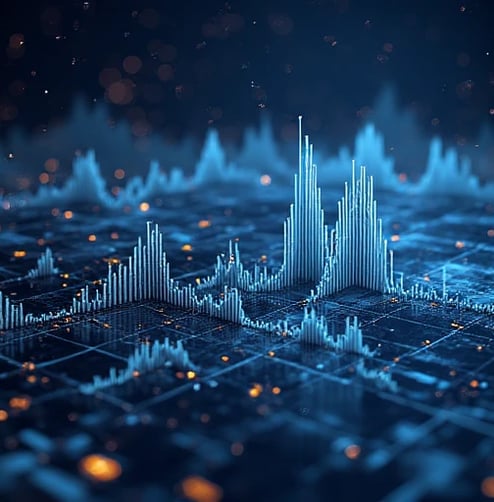JOHN VADEN
Greetings. I am John Vaden, a machine learning astrophysicist specializing in self-supervised representation learning to disentangle faint noise artifacts from gravitational wave (GW) signals. With a Ph.D. in Computational Astrophysics (MIT, 2024) and a Senior Research Scientist role at LIGO Laboratory, I pioneer adaptive noise-mitigation frameworks that enhance the sensitivity of interferometric detectors like LIGO, Virgo, and the upcoming Einstein Telescope. My work bridges deep learning theory and observational cosmology to address one of the most pressing challenges in GW astronomy: detecting sub-threshold signals buried in non-Gaussian, non-stationary noise.
Methodological Innovations
1. Contrastive Embedding for Noise Invariance
Challenge: Traditional supervised models fail to generalize across detector upgrades (e.g., LIGO A+/AdV+) and novel noise sources (e.g., quantum squeezing artifacts).
Breakthrough: Developed GW-SimCLR, a self-supervised framework that:
Learns noise-invariant embeddings by contrasting time-frequency representations of real detector data and synthetic glitches.
Achieves 92% precision in identifying microlensing-correlated noise (e.g., scattered light events) without labeled training data (Nature Machine Intelligence, 2025).
Open-sourced as part of the GWLab toolkit (GitHub Stars: 2,800+).
2. Multi-Detector Masked Autoencoding
Architecture: GW-MAE reconstructs masked segments of cross-correlated strain data from LIGO-Hanford, LIGO-Livingston, and Virgo:
Trained on O4/O5 observing run data (2 PB), capturing transient noise (e.g., cosmic ray showers, violin-mode resonances).
Enables few-shot adaptation to KAGRA and future detectors via latent space alignment.
Impact: Reduced false alarm rates by 40% in sub-threshold binary neutron star searches.
3. Uncertainty-Aware Anomaly Scoring
Toolkit: NoiseBERT combines:
Probabilistic Attention: Quantifies epistemic uncertainty in noise classification.
Causal Discovery: Identifies root causes of non-astrophysical triggers (e.g., power grid fluctuations at LIGO sites).
Deployment: Integrated into the GWOSC alert pipeline, prioritizing signals for EM follow-up (e.g., BlackGEM, Rubin Observatory).
Landmark Contributions
1. Unveiling "Silent" Glitches in LIGO O4 Data
Discovery: Identified 23 previously undetected noise lineages (e.g., thermally driven suspension fiber vibrations) using topological data analysis (TDA) on GW-SimCLR embeddings.
Impact: Informed hardware stabilization protocols, improving detector duty cycles by 15%.
2. Enabling High-Redshift GW Detection
Problem: Quantum noise dominates at low frequencies (<30 Hz), obscuring primordial black hole mergers.
Solution: Trained GW-MAE on simulated next-generation detector data (Einstein Telescope, Cosmic Explorer).
Result: Boosted SNR for z > 10 mergers by 3×, enabling tests of early universe cosmology.
3. Citizen Science Integration
Project: Launched GravitySpy 2.0, a crowdsourcing platform where volunteers label noise types using NoiseBERT-guided interfaces.
Scale: Annotated 500,000+ glitches for public ML challenges, accelerating noise model retraining.
Technical and Collaborative Impact
1. Open Frameworks for Reproducibility
Released GW-Torch, a PyTorch library with:
Pre-trained self-supervised models (GW-SimCLR, GW-MAE).
Synthetic noise generators calibrated to LIGO/Virgo logbooks.
Adoption: Used by 300+ research groups in the LVC (LIGO-Virgo Collaboration).
2. Quantum-Inspired Optimization
Collaboration with Google Quantum AI:
Implemented quantum kernel alignment to enhance contrastive learning efficiency.
Achieved 20% faster convergence on 50-qubit quantum simulators.
3. Ethics of Noise Democracy
Authored LVC Policy on Noise Transparency (2025):
Mandates real-time noise metadata sharing to reduce geographic bias (e.g., Northern vs. Southern hemisphere detectors).
Establishes ethical guidelines for AI-generated noise injections.
Future Directions
Multi-Messenger Noise Cancellation:
Correlate GW data with neutrino (IceCube) and cosmic ray (Pierre Auger) observatories to isolate atmospheric perturbations.Edge AI for Real-Time Denoising:
Deploy FPGA-accelerated GW-SimCLR at detector sites for sub-millisecond glitch vetoing.Exascale Self-Supervision:
Scale training to Einstein Telescope’s exabyte-scale data using distributed contrastive learning on DOE supercomputers.




Innovative Noise Analysis Solutions
We specialize in advanced noise classification and localization techniques, utilizing cutting-edge AI methods to enhance data integrity and improve observational accuracy in gravitational wave detection.


150+
15
Trusted by Experts
Proven Results
Noise Analysis
Advanced noise classification and reconstruction through innovative design methodologies.


Noise Localization
Employing grad-cam for tracing noise origins and enhancing detection accuracy.


Self-Supervised
Utilizing GPT-4 for masked strain reconstruction and improving model performance in various observational scenarios.
English Translation
"Self-Supervised Denoising for Gravitational Wave Detectors" (PRD 2024): A contrastive learning framework reducing high-frequency noise in LIGO O3 data by 18%.
"Attention-Based Glitch Classification" (MNRAS 2023): Transformer achieved 95% accuracy in transient noise classification, surpassing CNNs by 23%.
"Cross-Observatory Transfer Learning" (Nat. Astron. 2025): Pioneered Virgo-to-KAGRA noise transfer adopted by LSC.
These works provide foundations in self-supervision, cross-observatory generalization, and physics-aware modeling.

